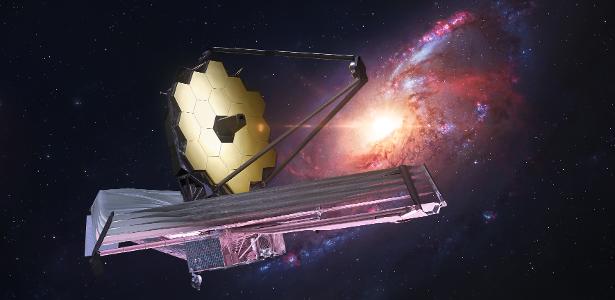
An international team of astronomers led by Brant Robertson from the University of California, Santa Cruz (USA) and Emma Curtis Lake from the University of Hertfordshire (UK) has confirmed the discovery of the most distant galaxy ever observed by scientists. The result was only possible thanks to the great observational power of the James Webb Space Telescope.
But you must be wondering: again?! Didn’t we see a lot of headlines about the farthest galaxy shortly after James Webb was released? Yes you are right. But this time the ad is different. For the first time, these are not just candidate galaxies, but galaxies with confirmed distances.
This happens because the first indicator of distance is the color of the galaxy. As light travels through the universe, and that universe expands, the light gets redder and redder. This is the well-known and enhanced effect of general relativity.
These galaxies did indeed appear particularly red in the first space telescope images. Thus, they were excellent candidates for distant objects. However, it is impossible to be sure that it is a really distant galaxy, or perhaps a naturally closer red object.
For scientists to verify an object’s distance, it is necessary to obtain spectroscopy data. Thus, we can use the known signatures of the chemical elements to determine how much “red” the light of this galaxy is, and thus confirm that the light traveled billions of years to get here.
In this case, the researchers used a known signature of hydrogen, which is the most abundant element in the universe. The team confirmed that the signature they were looking for was about 14 times redder than expected, underlining the galaxy’s enormous distance.
Investigate the past
It is interesting to note that the starlight in this galaxy has traveled more than 13 billion years. Seeing something that happened when the universe was just a kid 330 million years old.
The business isn’t just discovering the galaxy either. By investigating its properties, scientists can also understand a little better how it formed. This is fundamental to being able to explain the birth and growth of the first galaxies in the universe.
Scientists have seen, for example, that the observed galaxies (including the most distant galaxies of all) do indeed have relatively high masses, with nearly 100 million stars being formed. However, they still have time from the very beginning to form new elements within their stars.
Taken together, the data indicates that these galaxies have been able to grow very quickly since the Big Bang.
Come over
But don’t think that this record will last long.
All of these findings use the first data obtained by James Webb; It’s just preliminary tests and designs.
Soon, when the telescope is a more mature observatory, more ambitious projects will be looking deep into the sky for these distant objects.
The title “Farthest Galaxy” will soon be lost.

